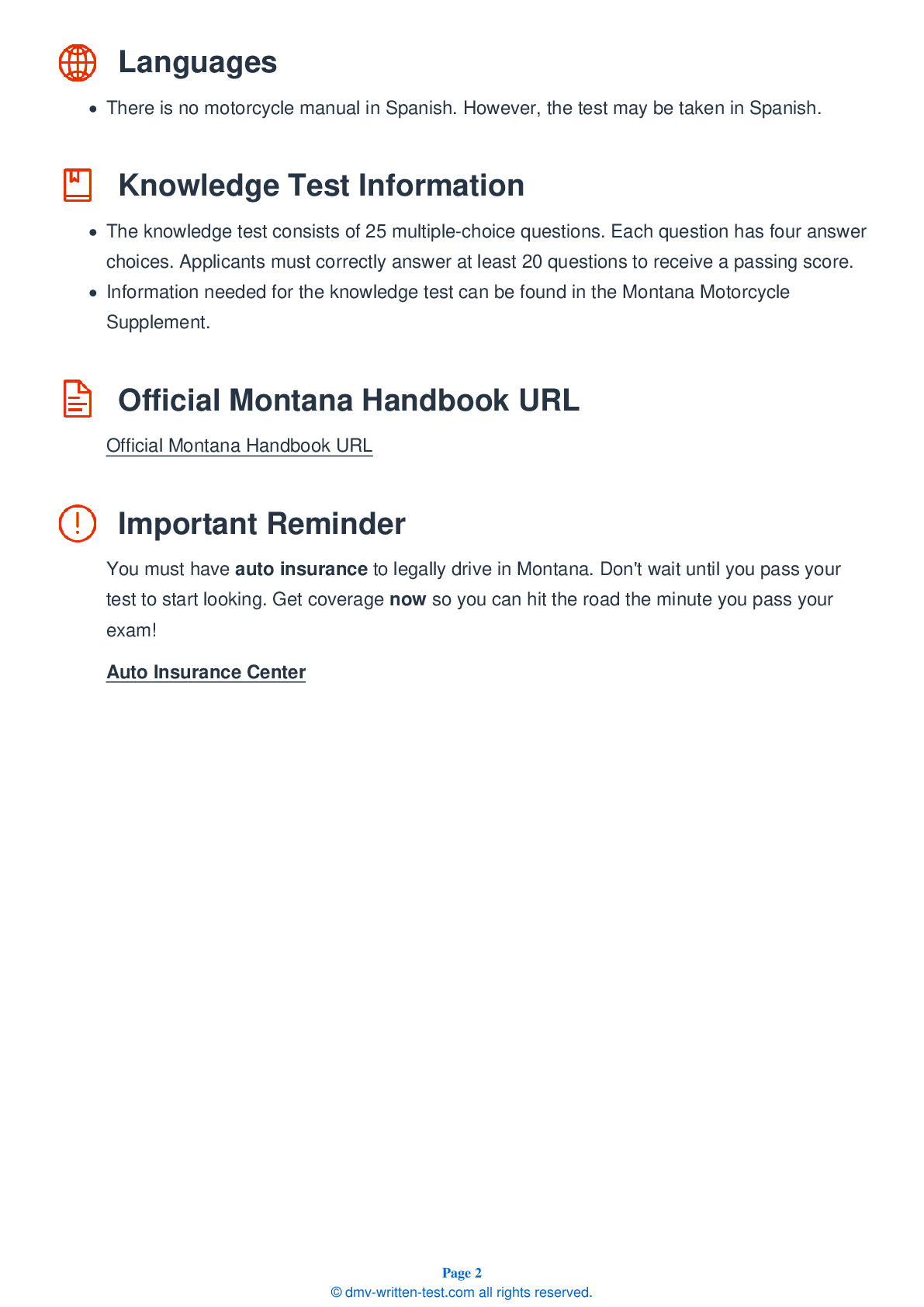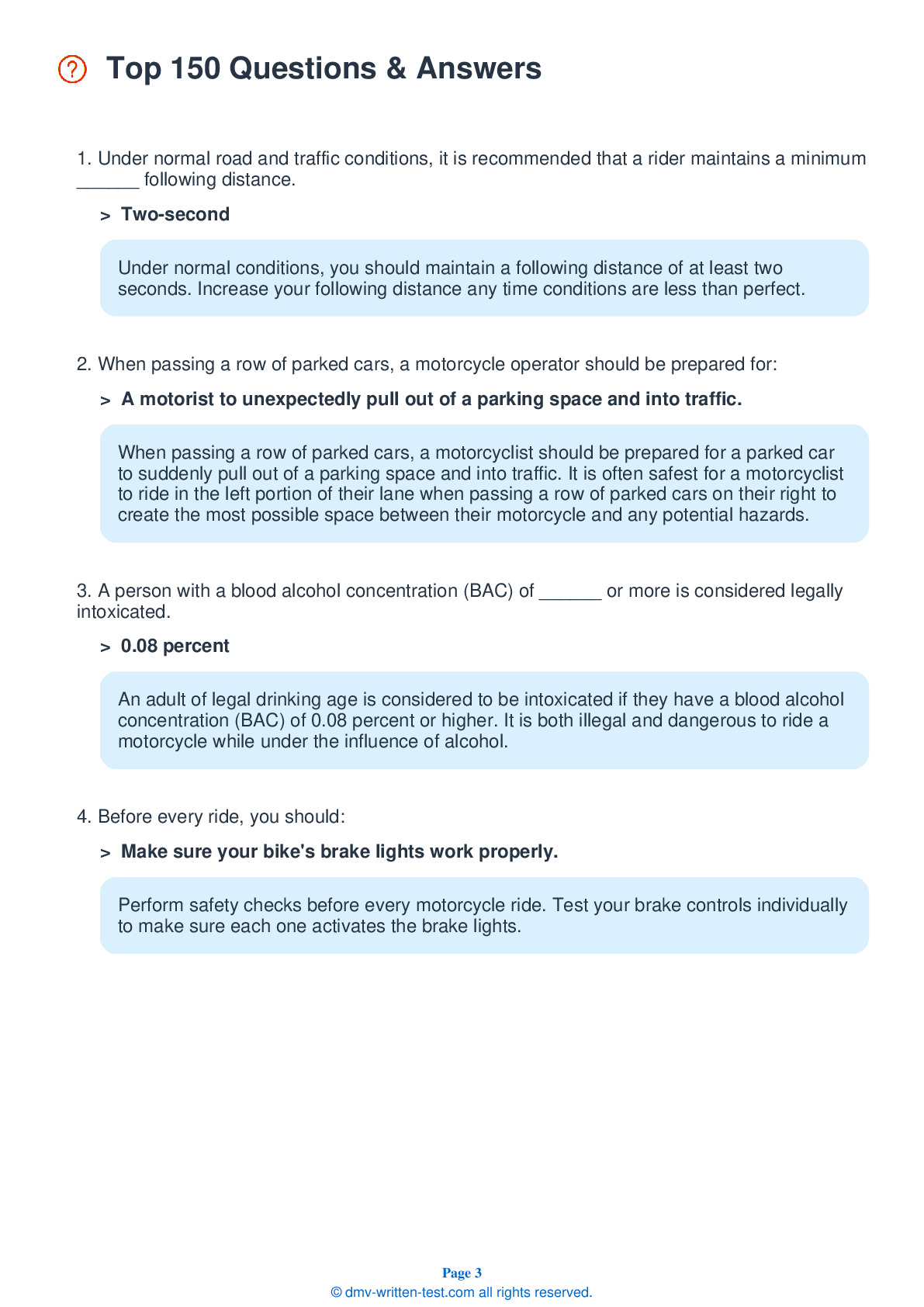2026 Montana Motorcycle Permit Test 12
The following questions are from real DMV written motorcycle permit tests. These are some of the actual permit questions you will face in Montana when getting your motorcycle learners permit. Each motorcycle theory practice test question has three answer choices. Select one answer for each question and select "grade this section." You can find this button at the bottom of the drivers license quiz. For a complete list of questions and answers for Montana please visit https://cheat-sheets.dmv-written-test.com/en/montana/motorcycle.
Number of Tests
Number of Question
Passing Score
1. Where is the front brake lever usually located?
Explanation
The front brake lever is generally located on the right handgrip. Make sure that you are aware of the locations of all your motorcycle's controls before beginning to ride.
2. Your lane position should not:
Explanation
A properly chosen lane position can optimize a number of safety factors. Your lane position should keep you out of other vehicles’ blind spots, increase your ability to see and be seen, help you avoid surface hazards, help you avoid wind blasts from other vehicles, and provide you with an escape route from any hazards that might arise. You should be positioned in a way that discourages other drivers from trying to share your lane.
3. The gear shift lever is located:
Explanation
The gearshift lever is located in front of the left footrest and is operated by the left foot. To shift up to a higher gear, position your foot under the shift lever and lift. To downshift, press the shift lever down.
4. After entering a turn, you should roll on the throttle and:
Explanation
Roll on the throttle through a turn to stabilize your suspension. Maintain a steady speed or accelerate gradually through the turn.
6. Where is the engine cut-off switch usually located?
Explanation




